Coffee
- Home
- Duc Thinh’s shop
- Coffee
Coffee is a key agricultural product in the economic structure of Dak Lak province, accounting for a significant share of the gross domestic product. With an export value of nearly 900 million USD annually, it represents approximately 55% of the province’s export turnover and 21% of Vietnam’s total coffee exports. Dak Lak is renowned as the “coffee capital” of Vietnam, consistently ranking first in the country in terms of both area and production. For many years, coffee has been a leading agricultural product in the province’s economic structure, contributing significantly to the gross domestic product and export turnover.
The characteristic and unique flavor of Dak Lak coffee beans is attributed to the following key factors:
- Geographic and Soil Characteristics:
The exceptional geographical and soil conditions of Dak Lak, combined with the ideal altitude and climate, contribute to the unique flavor of the coffee.
- Robusta Coffee Variety:
The Robusta coffee variety, predominantly grown in Dak Lak, delivers a robust flavor, characteristic of this type of coffee. The high caffeine content also contributes to the strong and deep flavor.
- Wet Processing Method:
The wet processing method accentuates the flavor and aroma of the coffee, creating a unique character in each bean.
- Unique Roasting Process:
The roasting process is carried out with meticulous attention to ensure that the flavor of Dak Lak coffee beans is fully developed and retains its distinctive character.
Coffee holds a significant and prominent place in Dak Lak’s culinary culture. Dak Lak coffee boasts a unique and delectable flavor, an enticing aroma, and a deep, mysterious black color. When savoring Dak Lak coffee, drinkers consistently experience an authentic sensation with the pure coffee taste and the fresh flavor of coffee grown on red basalt soil.
Duc Thinh Coffee – A Legacy Brand from the Coffee Capital:
Duc Thinh Coffee is a long-standing coffee brand originating from Buon Ma Thuot, the coffee capital of Vietnam. With over 20 years of experience in the industry, Duc Thinh has established its position through exceptional product quality and the characteristically authentic Vietnamese flavor.
Our main coffee for export:
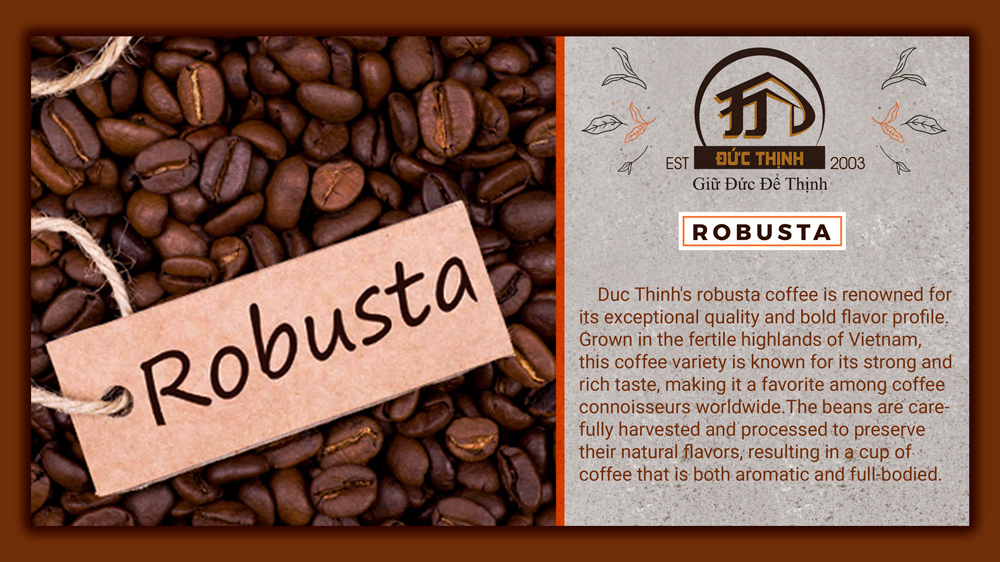
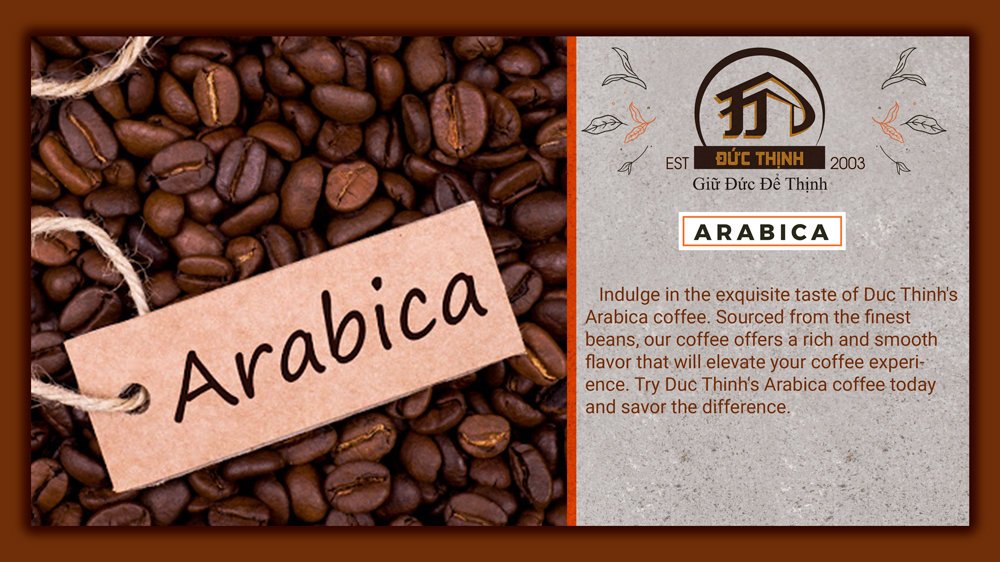
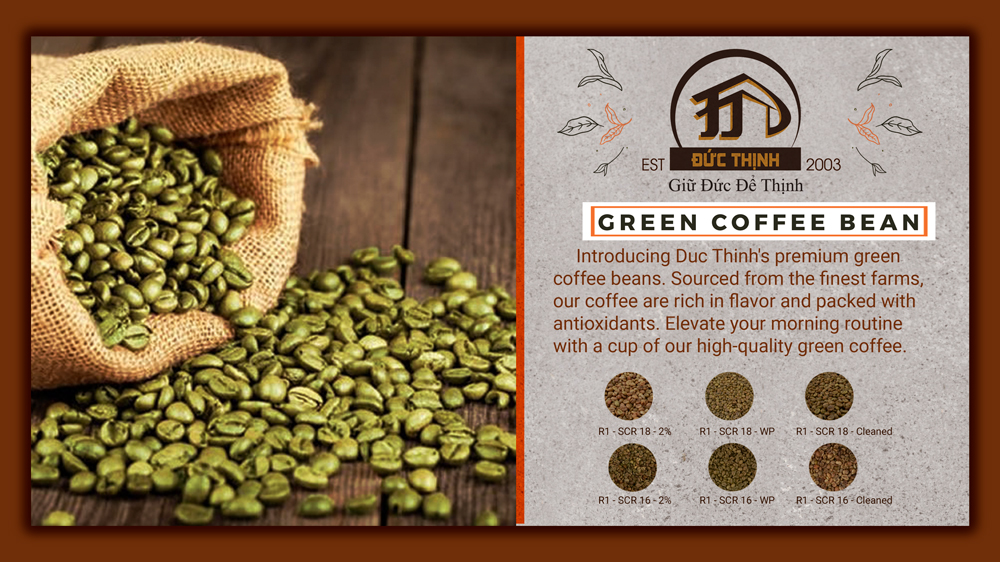
Origin:
Production Process:
Coffee Flavor:
Reputation and Quality:
Coffee Certificates
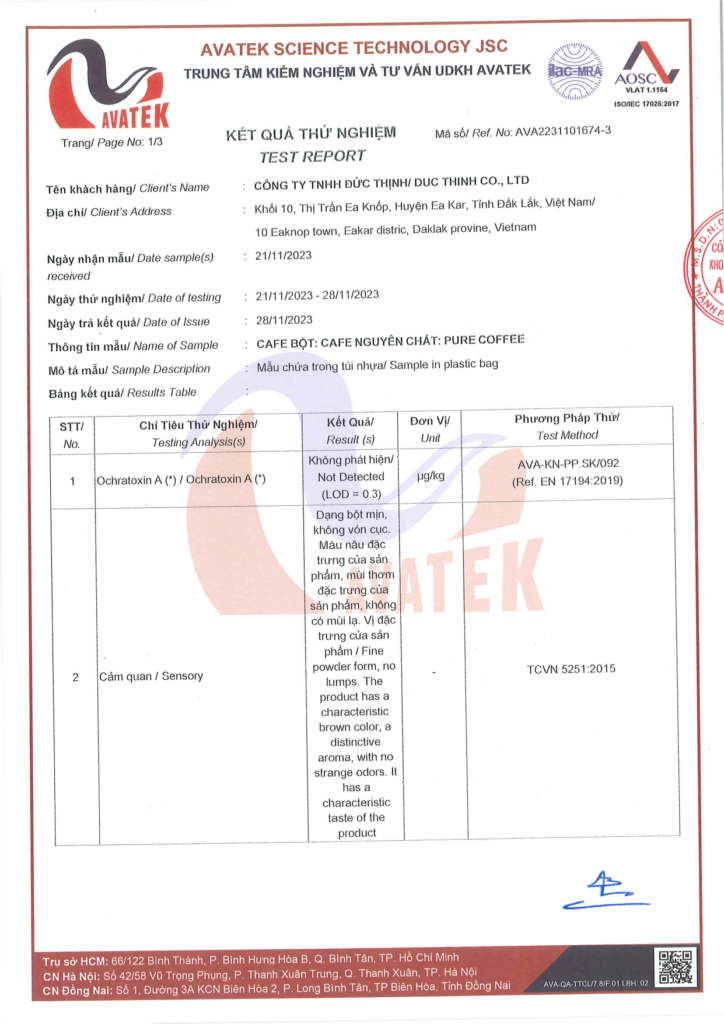
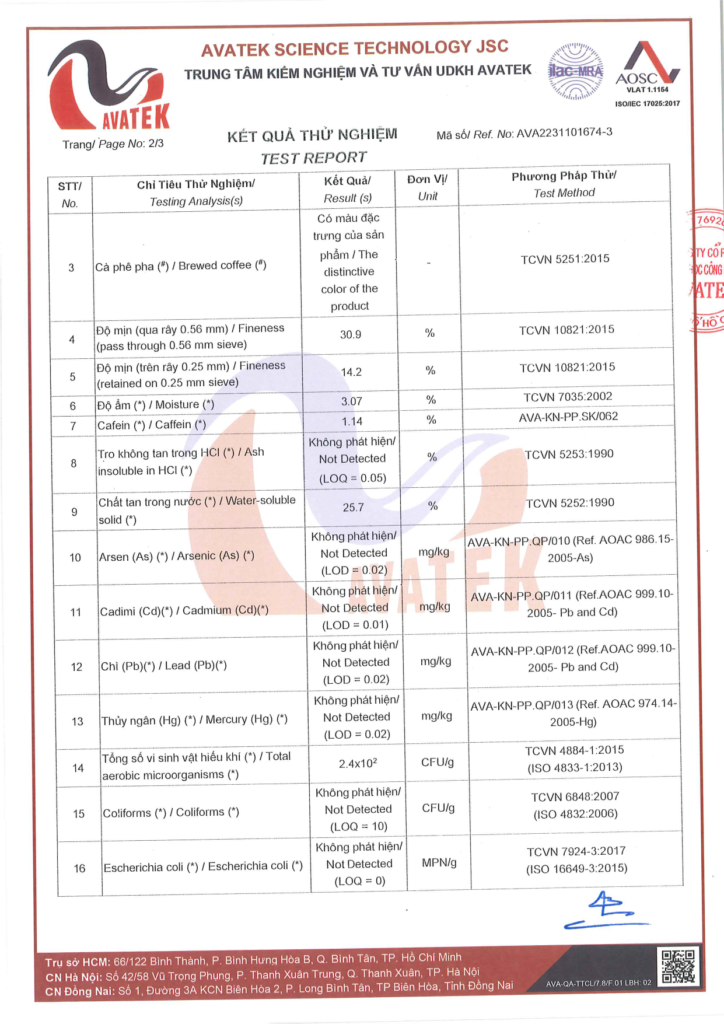
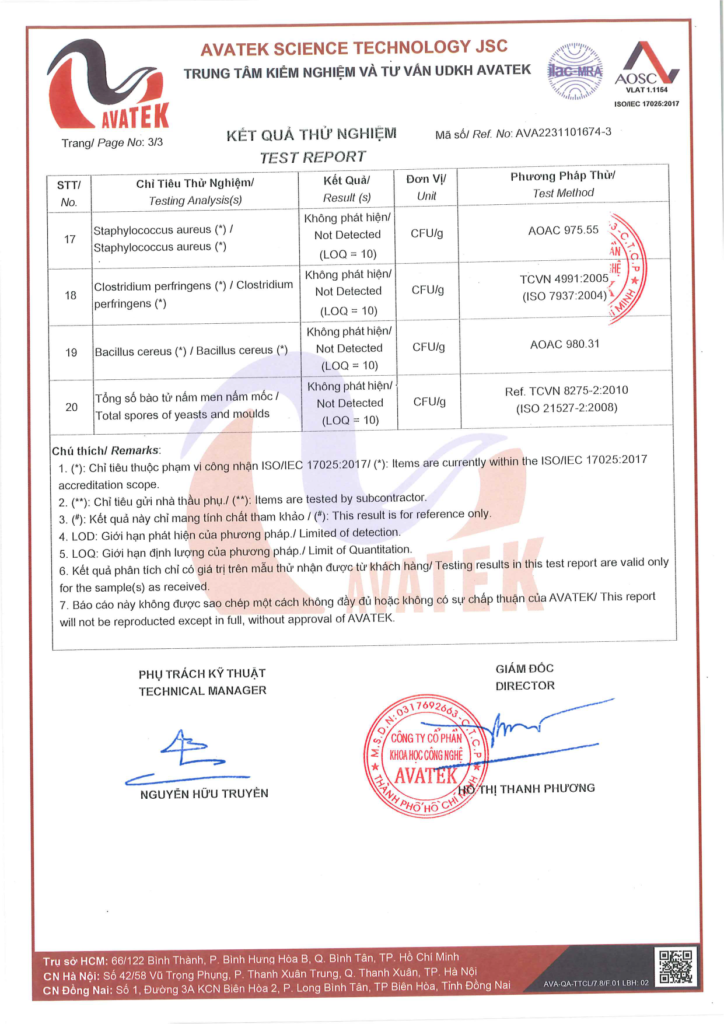
Coffee industry in Vietnam
Vietnamese coffee industry introduction
Coffee originated from the West, with the first coffee plant being grown in Vietnam in 1870. It wasn’t until the early 20th century that it was widely developed and cultivated on some French plantations. By 1930, there were 5,900 hectares of coffee plants in Vietnam. Initially, this beverage was only reserved for the aristocracy, French officials, or the intellectual class in urban areas. Over time, it gradually became a familiar and popular drink in the lives of the general population.
Since its presence, the Vietnamese coffee market has made remarkable advancements. In just the past 15-20 years, the national coffee production has increased hundreds of times and has become the world’s leading coffee exporter. Not only has it asserted its increasing market share internationally, but domestically, instant coffee is also becoming more popular and convenient, suitable for modern lifestyles.
Harvesting
Vietnam is one of the world’s largest coffee producers and a country known for high-quality coffee cultivation. Some prominent coffee-growing regions include:
- Lam Dong: Among the most famous coffee-growing regions in Vietnam, Lam Dong is known for its ideal conditions for coffee cultivation. With Da Lat situated at an altitude of around 1,500 meters above sea level, a cool climate, and nutrient-rich volcanic soil, it provides favorable conditions for coffee plants to thrive. Arabica coffee here is known for its distinctive flavor, aroma, and popularity.
- Dak Lak: This is the largest coffee-growing region in Vietnam, covering thousands of hectares. Robusta coffee from Dak Lak is characterized by its strong, bold flavor and is predominantly used in making Vietnamese iced coffee.
- Cao Bang: A newly emerging coffee-growing region in Vietnam, Cao Bang produces Arabica coffee with a unique flavor, aroma, and is processed using traditional methods, resulting in a special taste profile for the coffee.
- Dak Nong: Another rapidly developing coffee-growing region, Dak Nong produces Arabica coffee known for its rich, slightly bitter flavor and is popular in the market.
Production
Since 2017, Vietnam has emerged as a global cashew processing hub and the leading exporter of cashew kernels worldwide, contributing to over 50% of the world’s processed raw cashew production. The province of Binh Phuoc, recognized as the largest high-quality cashew growing region in Vietnam, plays a key role in this success.
Annually, Vietnam exports approximately 400,000 to 550,000 tons of cashew kernels. In 2018, the Vietnamese cashew industry reached a milestone production of approximately 2,660,000 tons, including shells, surpassing India by 3.4 times. By 2020, Vietnam solidified its position as a leading producer and exporter of cashews, with an export volume of 515,000 tons.
The main cashew product of Vietnam is Whole White Cashews, with the industry comprising 80% whole cashews and 20% broken cashews. The prevalence of whole cashews in Vietnam is due to manual shelling, a labor-intensive process performed by hand.
Vietnamese coffee export markets:
The Vietnamese coffee market is estimated to reach
511.03 million by 2024 and is projected to hit 763.46 million by 2029, growing at a CAGR of 8.13% during the forecast period (2024-2029).
The demand for organic food and beverages in Vietnam, especially for tea and coffee, is increasing at a faster rate due to lifestyle changes, rising food and beverage expenditure, a growing awareness of healthy eating, shifts in meal patterns, evolving eating habits, and a desire to explore new products.
